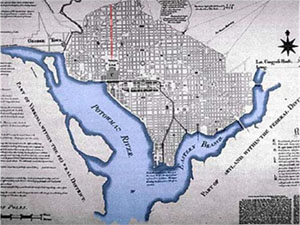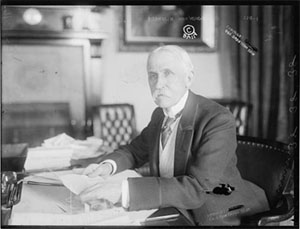The Mansion

The Mexican Cultural Institute is a Historic Site in Washington, DC!
The Mexican Cultural Institute of Washington, D.C. was designated as an Historic Site in the DC inventory of Historic Sites in 2012 and listed in the National Register of Historic Places in 2013. Such commendation speaks to the century-long heritage of our 16th street mansion, whose murals and decorations are on display to the public.
Listing in the D.C. Inventory of Historic Sites provides recognition of properties significant to the historic and aesthetic heritage of the nation’s capital. The Mexican Cultural Institute was chosen not only as a premier example of the Beaux Arts architectural tradition with historic interior artwork, but also for its association with the rise of Meridian Hill as the home to foreign embassies, and its exemplary illustration of the City Beautiful Movement, which sought to promote beautiful architecture beyond Washington’s monumental core.

After over six decades of having its offices at the 16th Street (map in the picture) Mansion, the Embassy of Mexico moved to a new building on Pennsylvania Avenue in 1989 making it possible for the Institute to establish its residence here. The site opened its magnificent doors to the new-born institution so it could enjoy the large and spacious facilities, imbued with the spirit and history of this century’s bilateral relations between Mexico and the United States. Thus, much like the historical pattern of the country as a whole, the Mexican Cultural Institute was born: the result of a dynamic cultural past with the promise of a great future. Brilliant works by the people of Mexico, the undertaking of thousands of years of encounters with different races and histories, are a decisive factor which have permanently fueled the programs of this noble cultural institution.

The Mansion, one of the most spectacular on 16th Street, is historically significant for both countries. It was designed in 1910 by the prestigious architects Nathan Wyeth, who earned his reputation by designing the West Wing of The White House. It was built on request by Mrs. Emily MacVeagh, wife of the Secretary of the Treasury during the Taft Administration. The Mansion was the family’s residence in the 1910s, becoming the site where some of the most outstanding celebrities of that time were entertained. In 1916, and for a period of five years, the U.S. government rented the Mansion converting it into the official guest house for visiting dignitaries. It was during this time that the magnificent facilities of the mansion housed King Albert and Queen Elizabeth of Belgium during their visit to Washington, D.C.

In 1921, the post-revolutionary government of President Alvaro Obregón purchased the Mansion (in the picture) to house the Embassy of Mexico, while establishing it as the official residence of its representative in Washington, D.C. Mexico’s diplomatic relations with the United States would be conducted from this location over the next 69 years, making it a symbol of the bridges of understanding and friendship between the two neighboring countries.
The Mexican government, in a successful attempt to enhance the Mansion’s splendor, added a portico to the Italian-style façade. The interior of this magnificent Mansion has aesthetically integrated and combined different styles and shapes, reflecting the dynamics of Mexican culture. Thus, the main hall, inspired by late 15th century Italian architecture, is a majestic setting for the mahogany English banister and 18th century Mexican altarpiece. The three-story mural by Roberto Cueva del Río, depicting some of Mexico’s more colorful traditions, provides a breathtaking backdrop to this grand entrance hall.
NEXT > “MCI History: Nathan Wyeth on Meridien Hill” by Architectural Historian Pam Scott
